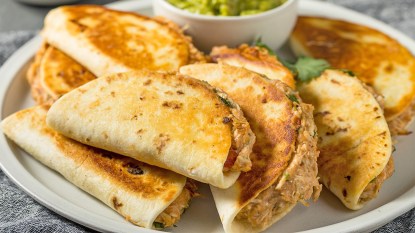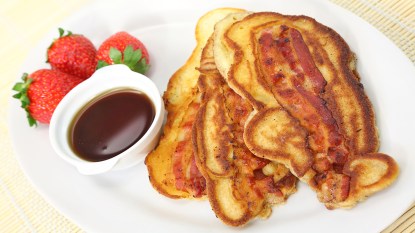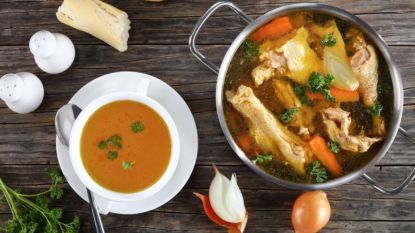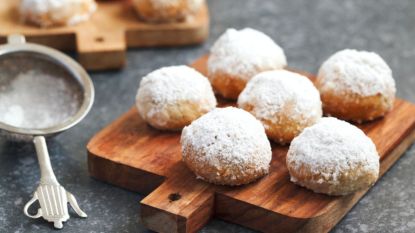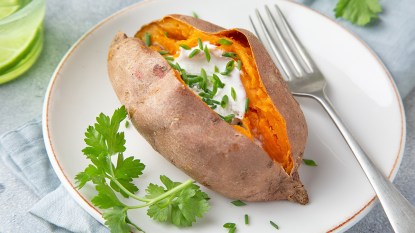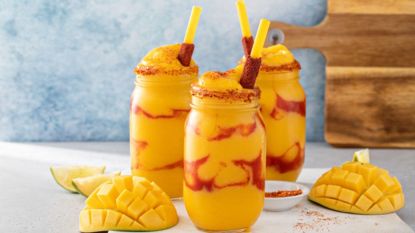Tired of Regular Green Tea? Try Hojicha, its Less-Caffeinated Cousin
Perfect for a cozy nightcap.
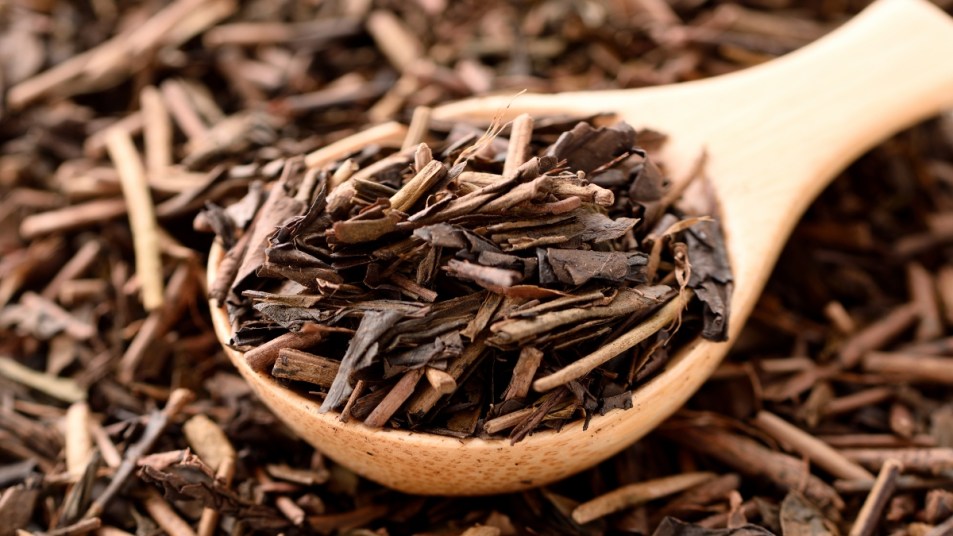
If you’re like me, you start and end your day drinking something warm out of a mug. In the morning, it’s coffee; in the evening, it’s tea. Green tea, with its rich flavor and abundant health benefits, is my favorite. Unfortunately, it contains caffeine, which makes drinking it at night a problem. There is, however, a green tea alternative that’s equally healthy, flavorful, and aromatic. Hojicha — a Japanese tea that’s made from roasting green tea leaves until they’re smoky, sweet, and low in caffeine — is the comforting nightcap you’ve been waiting for.
What is hojicha?
Hojicha (which means “roasted tea” in Japanese, according to tea blog Stories About Tea) is a type of green tea. Japanese food brand Bokksu says the three most popular types of green tea are matcha, sencha, and hojicha. You’ve probably heard of matcha: It’s tea made from finely ground green tea leaves. Sencha, the most popular form, is made from steamed and dried tea leaves. Hojicha is made from green tea leaves that have been heavily roasted, traditionally in a porcelain pot over charcoal. Because of its preparation, hojicha is the least caffeinated of the three types of green tea.
What does hojicha taste like?
Hojicha’s roasted tea leaves give it a malty, nutty, caramel-like flavor that some people compare to coffee, notes Serious Eats. Because of its deep reddish-brown color, it also It looks more like coffee than other forms of green tea. If the vegetal, bitter, or astringent flavors of sencha and matcha are unappealing to you, you may enjoy the subtly sweet, mellow taste of hojicha instead.
The History of Hojicha
While tea has been deeply ingrained in Japanese culture for centuries, Stories About Tea notes that hojicha wasn’t made until the 1920s in Kyoto. Before hojicha, it was common practice to throw away the non-leaf parts of the green tea plant, like the stalk and stems. To mitigate food waste, brewers began roasting the discarded parts over charcoal, which resulted in a uniquely aromatic, earthy tea that quickly became popular nationwide. Because it had a lower caffeine content, hojicha became a tea for children and for nighttime consumption.
The Health Benefits of Hojicha
It’s no secret that green tea is good for you. It’s packed with antioxidants and has been said to help fight diseases. Because of its distinct preparation, hojicha has unique health benefits of its own. Aside from being a better choice for those with caffeine sensitivities due its lower caffeine content, it promotes holistic health in multiple ways, according to Senbird Tea. Here are five benefits hojicha provides:
- Strengthens immunity. Hojicha contains compounds that help defend your body against illness. It has vitamins E, C, and A, which boost immunity, and polyphenols (plant compounds) that have antiviral properties. Keep in mind that a 2016 study found high-heat roasting of tea leaves, like the technique used to make hojicha, can reduce the content of disease-fighting compounds like catechins. While hojicha is not likely to have as many catechins as other green teas, its mellow flavor may be easier to drink — and drinking hojicha tea is better than drinking no green tea at all.
- Promotes good digestion. While roasting green tea leaves may decrease catechin and caffeine content, it doesn’t get rid of healthy fiber. Senbird claims that hojicha contains more fiber than other forms of green tea, and is therefore great for colon health and digestion.
- Supports heart health. Hojicha’s vitamin E helps keep blood clots at bay, and its other compounds can fight cardiovascular disease and regulate blood pressure and cholesterol.
- Benefits skin. Hojicha contains vitamin C, which can help even skin tone and promote elasticity.
- Relieves stress. Its smooth, toasty aroma and flavor are soothing, and because of its low caffeine content, it’s a less stimulating, more relaxing tea to indulge in. Hojicha also contains L-Theanine, an amino acid that promotes relaxation in the brain without causing drowsiness. It can even help keep blood pressure low.
How To Brew Hojicha
While you can brew hojicha like you would most any other teas, different methods produce different results, says tea website Naoki Matcha. Powdered hojicha is the fastest mode of preparation and can simply be stirred and dissolved into hot or cold water. It has a light flavor with cocoa notes. Loose-leaf hojicha tastes smokier with a little sweetness, and is best brewed in hot water (almost boiling, about 194 degrees Fahrenheit) for about 30 seconds. It can also be brewed in cold water, but it will take much longer. If you’re using loose leaf tea, Naoki Matcha recommends 2 teaspoons tea per 8 ounces water. For tea bags, the go-to ratio is 1 tea bag for every 2 cups water.
Where To Find Hojicha
One drawback to hojicha is that it isn’t as readily available as its cousins, matcha and sencha. If you can’t find it at your local grocery or Asian specialty store, search independent online sellers and websites like Amazon. Try this organic Japanese hojicha from Yamasan (Buy from Amazon, $14.30).
Hojicha is a delicious, unique alternative to other forms of green tea. Grab your favorite mug and enjoy! Also, check out our story on butterfly pea flower tea if you’re looking to try another health-boosting sip.


